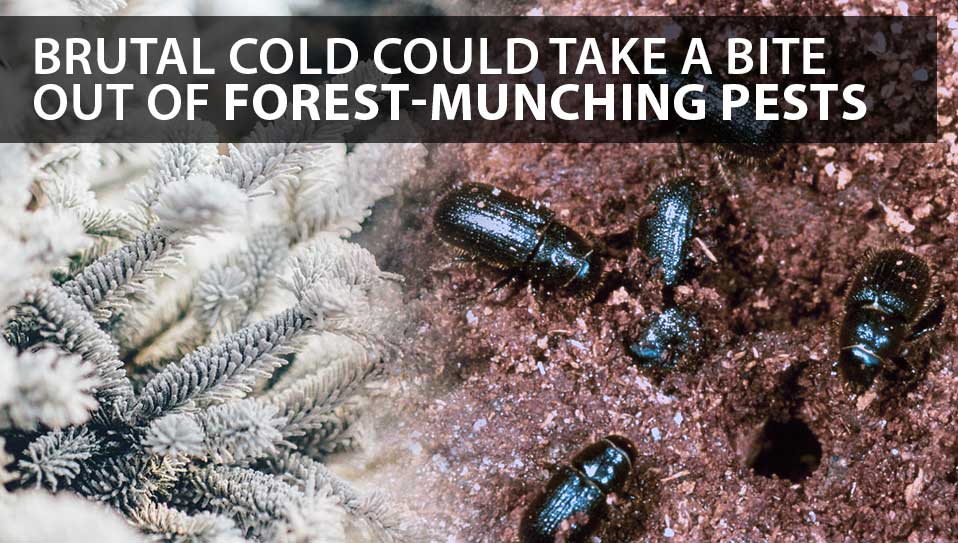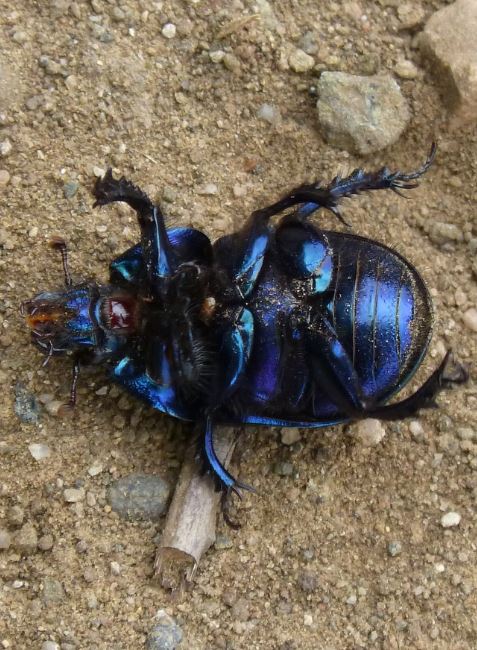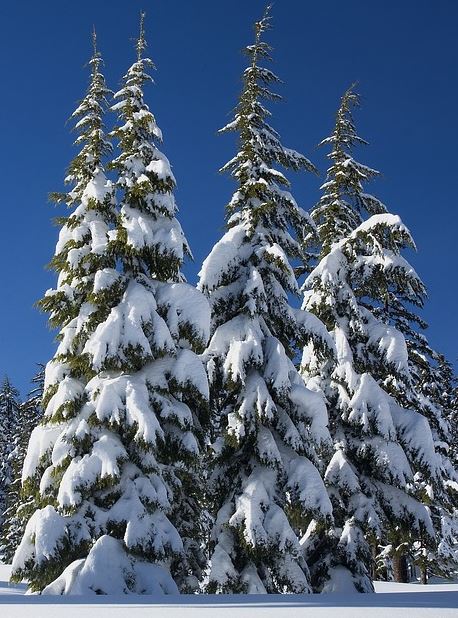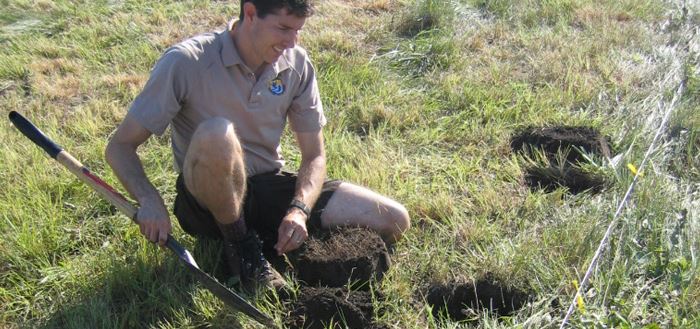Pest in Forests Might Take a Hit Due to Brutally Cold Weather

With all the talk of global warming, a lot of people are asking what's up with the record cold temperatures this year. It's been brutally cold with only a few minor periods of relief since Thanksgiving. And while that’s great for ski resort owners and stores that sell firewood, hot chocolate, and gloves, it’s been tough on homeowners who need to keep their houses warm.
And you know who else isn’t celebrating the return of arctic weather? The southern pine beetle. Huh? Well, it turns out that a lot of species who moved to the northern latitudes to take advantage of the unusually warm weather in recent years are finding no one wants to sell them hot chocolate and gloves, and they're dying by the score.
No Relief in Sight for Forest Munching Pests
From an environmental standpoint, it's been one of the big stories of recent years: invasive species taking up residence in the forests of the northeast and upsetting the delicate balance that's needed to keep the woods vibrant. Species such as the spotted lanternfly and the aforementioned southern pine beetle have been turning large swaths of the woods into a wasteland and causing despair from Bayonne to Bethlehem. In fact, it's estimated that nearly 50,000 acres of New Jersey woodlands alone have been decimated by the southern pine beetle in the past decade or so.
The sole component enabling their seemingly inexorable march northward has been steadily rising wintertime temperatures. And while people argue over whether global warming is a natural occurrence, when it comes to the southern pine beetle, it doesn’t matter if it’s natural, manmade, or caused by political hot air emanating from Washington. The fact is it’s here, and all kinds of invasive pests have been taking advantage of it.

Environmentalists, forest conservationists, botanists and just about everyone else concerned with keeping the forest healthy had been wringing their hands over the lack of effective tools for dealing with forest munching pests. And then the cold moved in.
Nowhere to Run, Nowhere to Hide
Researchers at Columbia University concluded last year that a determining factor regarding whether the southern pine beetle survives the winter or not is the temperature of tree bark in the region on the coldest night of the year. The pine beetle uses the tree bark as an insulating blanket against the cold. If the tree bark is unfrozen, it makes good insulation. If it freezes, however, the southern pine beetle has nothing to keep it warm and freezes to death. Because the lowest temperature of the winter in recent years has been steadily rising the pine beetle has had plenty of comfy insulation.

Research indicates that the southern pine beetle cannot survive if the tree bark temperature dips below 14 degrees Fahrenheit. In recent years that threshold has never been reached. This year, however, the brutal cold has descended from the arctic producing several nights that have dipped below the 14-degree threshold, with more than one dropping into the single digits. Pine beetles have found nowhere to run, nowhere to hide from this throwback weather and forests all over the northeast have been the beneficiaries.
Not a Magic Bullet
But while the cold weather has had a positive effect it’s not likely to be the magic bullet many hope it will be. Researchers say that while a large proportion of pine beetles will be killed off the cold won't get all of them because some are just burrowed in too far for the cold to affect them. So we're not looking at this winter being a kind of prolonged elimination event. It can, however, provide the forests and those tasked with preserving them a much-needed breather. Resources can then be redeployed to focus on those areas where holdouts remain, and other efforts can be taken to help affected areas that are now free of forest pests to recover.

Cold Weather Spells Agricultural Relief as Well

The spotted lanternfly which arrived in the region from Asia only a few years ago has spread at an alarming rate, enabled by the warmer winters. It doesn’t confine its destructive efforts solely to the remote forests but instead tends to go after cash crops including grapes, apples, peaches and other fruits. Scientists are aware that this aggressive pest is susceptible to extremely cold weather, but they’re not sure exactly how susceptible. Some estimates are that the return of temperatures could eradicate as many as 80% of spotted lanternflies more in line with historical norms. Other estimates are less optimistic, although everyone agrees there should be a significant economic benefit.
Wait and See
There is no way to know at this point exactly what effect the recent cold will have on pest populations, but the fact is the longer the brutally cold temperatures hang around, the better it is for forests and other vegetation. However, experts also caution that not even the recent single digit temps are likely to have much effect on species like the emerald ash borer, which is capable of surviving temperatures of minus 20. On the whole, though, this winter should prove to be an immense learning opportunity, and you can be sure that as winter turns to spring researchers will be fanning out in record numbers to try and assess the damage to invasive species.

Reason to be Optimistic
In 2014 the much vaunted “polar vortex” actually had the effect of killing off vast numbers of hemlock woolly adelgid. That particular forest pest had been having its way with hemlock and spruce trees for several years but was dealt a severe setback by the cold (thank you PV). But while that precedent provides some reason to be optimistic scientists caution that a decade of constantly rising temperatures has created such huge pest populations that it may take several years of brutal cold in succession to completely eradicate most invasive species. With all due respect to those who must pay extravagant heating bills, we’re keeping our fingers crossed for more cold.
